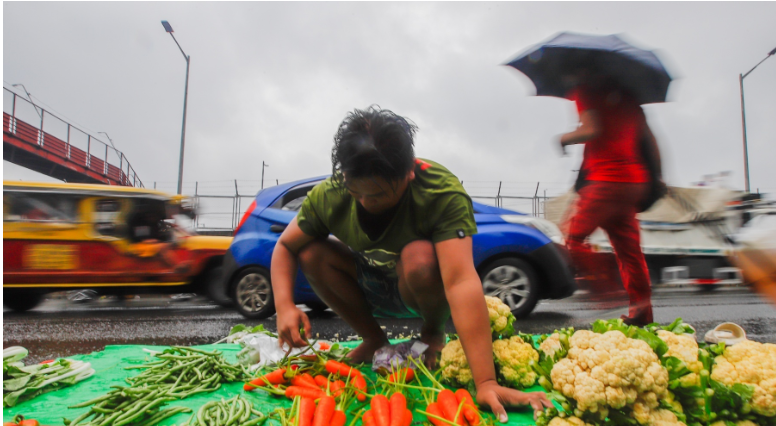 At a Glance
At a Glance
- Over 25 million Filipinos struggled to afford basic needs, including food, in the first semester of 2023, according to the Philippine Statistics Authority.
- The poverty rate decreased to 22.4% from 23.7% in the same period in 2021, representing about 25.24 million individuals.
- A family of five was considered poor if their monthly income was below P13,797 to cover basic food and non-food needs.
- The incidence of subsistence was 8.7%, equivalent to approximately 9.79 million individuals unable to afford basic food requirements.
- The percentage of Filipino families living below the poverty line decreased to 16.4% in the first semester of 2023 from 18% two years ago.
- Approximately 4.51 million Filipino families earned less than the P13,797 per month threshold set by the government.
Over 25 million Filipinos were struggling to meet their basic needs, including food, due to insufficient income, the Philippine Statistics Authority (PSA) reported on Friday, Dec. 22.
The PSA’s preliminary 2023 First Semester Official Poverty Statistics showed that about 22.4 percent of the country’s population were unable to afford their basic food and non-food needs from January to June this year.
However, this latest poverty rate, equivalent to 25.24 million Filipinos, marks a decrease from 23.7 percent in the same period in 2021.
A family consisting of five members is deemed poor if their monthly income was below P13,797, which was necessary to cover their basic food and non-food needs.
On the other hand, the incidence of subsistence among Filipinos, or the proportion of individuals unable to afford even the most basic food requirements, stood at 8.7 percent, equivalent to approximately 9.79 million individuals.
Meanwhile, the PSA reported a decrease in the percentage of Filipino families living below the poverty line, with their incomes growing faster than the rise in consumer prices.
The country’s family poverty rate dropped to 16.4 percent between January and June 2023 from 18 percent in the same period two years ago.
These updated poverty figures indicated that approximately 4.51 million Filipino families were earning less than the P13,797 per month threshold used by the government to determine if a family is considered poor.
National Statistician Claire Dennis Mapa said the reduction can be attributed to the faster income growth among Filipino families in the first and second deciles.
The PSA income decile categorizes families into 10 groups based on their yearly family income, with the first decile representing the lowest income and the 10th decile the highest.
According to the PSA, families in the first decile registered a 21.4 percent increase in income between the first six months of 2021 and 2023, compared to a growth of 9.4 percent in the same period from 2018 to 2021.
In the second decile, Filipino families’ income grew by 19.4 percent compared to the 9.8 percent previously recorded.
Meanwhile, the poverty threshold, which is the minimum income required for a family to meet the basic food and non-food requirements, grew by 14.2 percent, lower than the previous record of 14.7 percent.
This means that the growth of income among families who are living near the poverty line was higher compared to the increase in prices of basic food and non-food needs.
“So, it shows that the first three deciles are the higher income increases kaya ‘yun ang nagpa-decrease sa ating poverty incidence,” Mapa said.
[So, it shows that the first three deciles have the highest income increases, which decreased our poverty incidence.]
For Socioeconomic Planning Secretary Arsenio M. Balisacan, this latest tally shows a significant trend in the improvement of income among Filipino families.
“I think that’s a very significant trend if we can sustain that because poverty reduction is also very sensitive to improvement in the distribution of income,” he said during the press briefing.
“That’s how you look at the inclusivity of growth when the lower-income groups particularly the poor are participating even more to the growth classes,” he added.
Among the regions, lower poverty incidence among Filipino families was seen in Metro Manila at 3.3 percent while the Bangsamoro Autonomous Region in Muslim Mindanao had the highest at 39.4 percent.
The Caraga region, on the other hand, recorded the highest decline in poverty incidence among families at 10.2 percentage points from the first half of 2021 to the first half of 2023. — Xander Dave Ceballos
*****
Credit belongs to: www.mb.com.ph
 Atin Ito First Filipino Community Newspaper in Ontario
Atin Ito First Filipino Community Newspaper in Ontario






